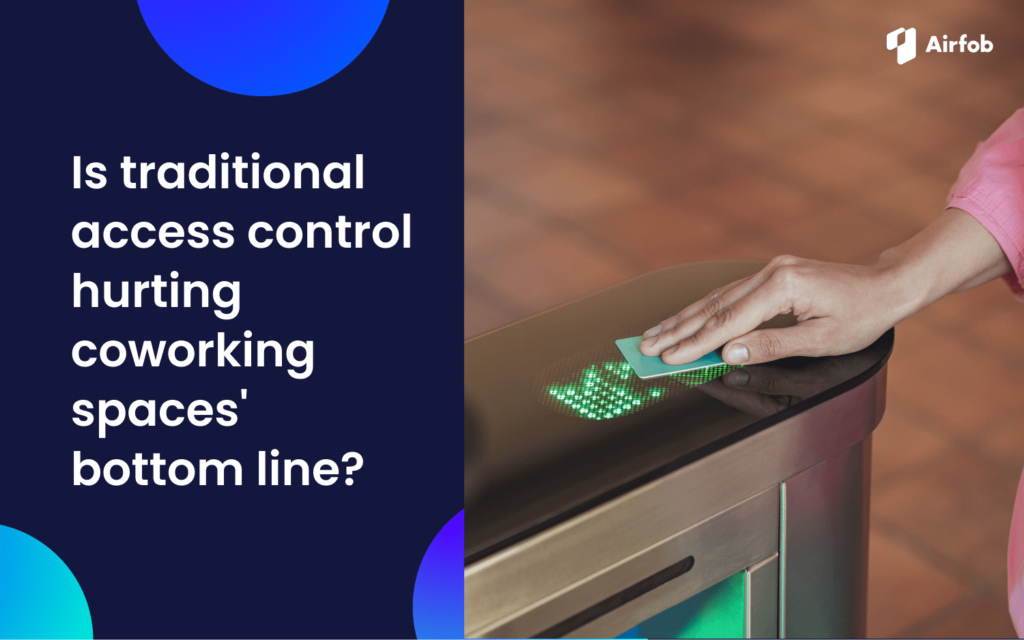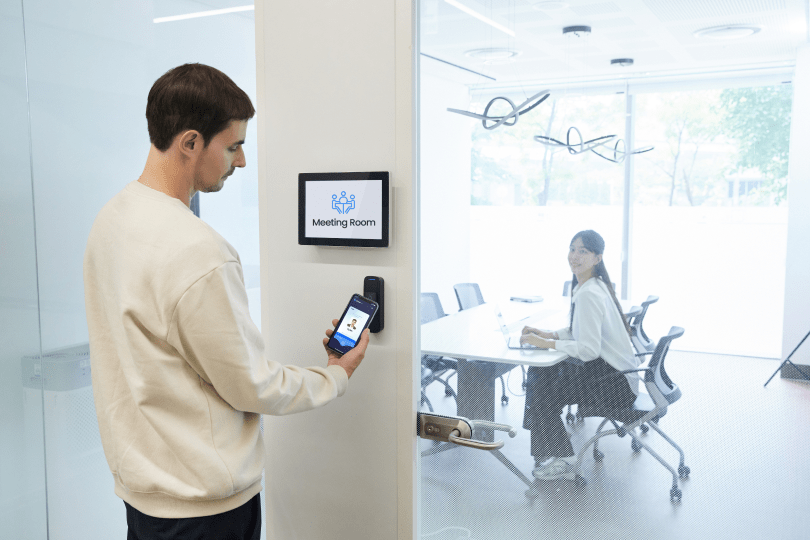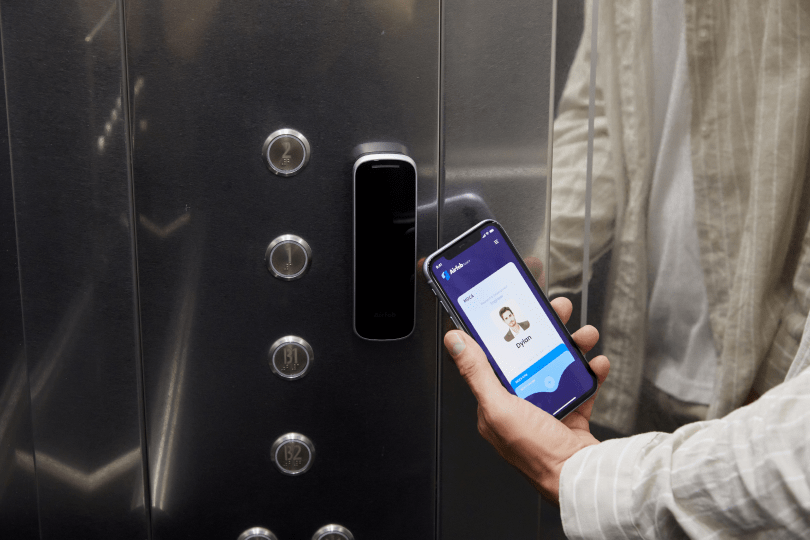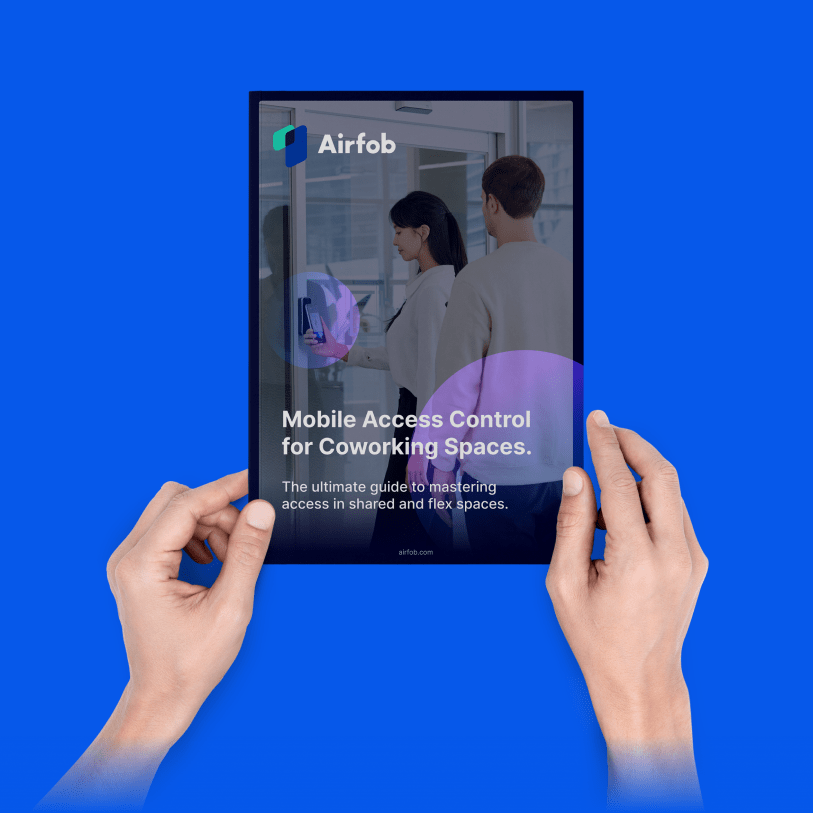Is traditional access control hurting coworking spaces’ bottom line?

The rise of remote work has caused a significant decline in demand for traditional office spaces. Projections indicate that cities like New York may see up to a 49% drop in office values by 2029 due to the persistent work-from-home model.
This shift presents incredible opportunities for coworking operators, but only if their strategies and technologies enhance operational efficiency and user experience.
On the technology front, coworking operators and commercial real estate companies need advanced systems to track how members and tenants use spaces, allowing for flexible reconfiguration with minimal cost and effort. Imagine that with just a few clicks, a traditional office space can be transformed into several flexible workspaces.
These systems should also enable remote access management, reduce the need for physical staff, and ensure secure, seamless entry to facilities, aligning perfectly with the needs of modern, distributed workforces.
Are coworking spaces burdened by traditional access control systems that lack flexibility due to their reliance on RFID cards and physical servers? Is the difficulty in onboarding new users and updating access rights across branches hurting coworking space operators’ bottom line?
54%
of coworking spaces were not profitable in 2023.
Source: Global Coworking Survey by DESKMAG.

Why do coworking spaces need flexible access control?
Staffing challenges and profitability.
The most profitable coworking spaces are also the most likely to report that finding enough qualified staff is a problem. No surprise right? In 2023, according to the “Global Coworking Survey” by DESKMAG, wages accounted for 23% of expenses, up from 17% in 2019. Mobile access control systems like Airfob reduce time spent handling cards. This streamlines operations, allowing staff to focus on more strategic activities, while also reducing the need to hire.Layout and revenue.
The layout of a coworking space directly impacts its profitability. Since 2016, the demand for private offices with flexible leases has consistently increased. Consequently, spaces with more area dedicated to private offices are significantly more likely to be profitable. Airfob addresses this in two ways. First, it ensures that access to private offices is seamless and secure. Second, it allows operators to quickly and affordably reconfigure spaces as tenants’ needs change.Age and profitability.
The age of a coworking space also influences its profitability. Before the pandemic, older coworking spaces were generally more profitable. However, there is now a sweet spot around the six-year mark. Locations over ten years old see a decline in profitability, with less than half turning a profit. This trend highlights the need for continuous innovation and adaptation, where solutions like Airfob can play a pivotal role in maintaining efficiency and reducing operational costs.MORE
THAN
HALF…
of profitable coworking spaces identify attracting new members as one of their biggest problem.
Source: Global Coworking Survey by DESKMAG.

Flex space means flex access.
According to CBRE’s “What’s Next for Flex” report (August 2023), over half of survey respondents want flexible access to shared building services and amenities, such as meeting rooms, overflow space, daycare, and fitness facilities.
Furthermore, 39% seek flexible, usage-based lease structures, particularly within tech companies. Managing access to these spaces and services is crucial to the coworking business model. Efficient access control, supported by cloud integrations, can play a pivotal role in meeting these needs.
Diseconomies of scale.
Contrary to pre-pandemic expectations, larger coworking spaces with 250 to 500 desks are now less likely to be profitable. This trend affects both standalone locations and larger chains. Much of this inefficiency is due to the need to add community management staff linearly as the number of members increases. Mobile, cloud-based access control reduces the time spent managing access cards, enabling existing staff to work more efficiently and focus on enhancing the member experience.
Occupancy rates.
High occupancy is the most significant predictor of profitability in coworking spaces. Ensuring high occupancy rates requires offering user-friendly services that enhance the tenant experience. Mobile access control systems like Airfob can contribute to higher retention rates by providing a convenient and secure way for members to access their spaces. Additionally, these systems ensure that community managers can focus on members wellbeing instead of policing access, improving their overall experience. Indeed, by enabling coworking spaces to onboard users remotely, new members can automatically receive an access pass, directly on their phone, before even walking to the front door.
Why is outdated access control such a challenge for coworking spaces?
Access control systems help coworking spaces manage who can go where within a facility. Traditionally, these systems rely on physical keys, RFID cards, or similar dated technologies. They often require on-site infrastructure and manual management, which can become cumbersome and inefficient over time, especially in dynamic environments like coworking spaces. Fluidity and flexibility are essential for a modern coworking environment. Antiquated access control systems can lead to rigidity. For example, branches within the same company may have incompatible systems that are poorly linked. This complicates management, makes it difficult to reconfigure spaces, and restricts members to their home branches.
My staff is stuck at the front desk.
One of the major drawbacks of legacy access control systems is the high operational cost associated with managing and issuing physical keys or RFID cards. Every new or departing member requires staff intervention to distribute or collect these physical tokens. Additionally, each branch typically needs a community manager stuck at the front desk, dedicated to handling access issues, which consumes significant time and resources.

My access control systems steers like the Titanic.
Managing access for a transient user base is inherently challenging with legacy systems. Adjusting access permissions quickly to accommodate new members, temporary visitors, or changing office configurations is often a cumbersome process. The rigidity of these systems makes it difficult to respond dynamically to the needs of a modern, flexible workspace.
My members don’t remember which card to use.
From a user perspective, legacy access control systems are far from ideal. Members often need to carry and manage multiple keys or cards, leading to frustration and inconvenience. The process for booking and accessing meeting rooms or other amenities is usually inefficient, requiring physical presence and manual intervention, which detracts from the seamless experience that modern coworking spaces aim to provide.
Updating reader firmware is a nightmare.
Another significant challenge with legacy access control systems is that offline readers require expensive, inconvenient on-site visits to update firmware. These on-site updates can sometimes lead to bricked readers, disrupting access and requiring further maintenance.
Moreover, adding new features or capabilities often means updating on-site servers and firmware, adding to the complexity and cost. This lack of remote management capability hinders operational efficiency and increases the burden on IT, HR, and facilities management teams.
I am unsure if my spaces are really secure.
Security is a critical concern with legacy access control systems. Physical keys and RFID cards can be easily lost or stolen, posing a significant security risk. Tracking and auditing access events is also problematic, as manual systems often lack comprehensive logging and monitoring capabilities, making it difficult to identify and respond to unauthorized access.

My spaces don’t scale with my ambitions.
As coworking spaces grow, the limitations of legacy access control systems become more pronounced. Expanding the system to include new doors or locations involves considerable costs and complexity, particularly when integrating additional door controllers. This lack of scalability can hinder the growth and adaptability of the business.
FREE EBOOK
Why is mobile access control ideal for coworking and flex spaces?

Download your
free eBook!
This eBook is particularly valuable for coworking space owners, managers, and anyone interested in the future of flexible work environments.